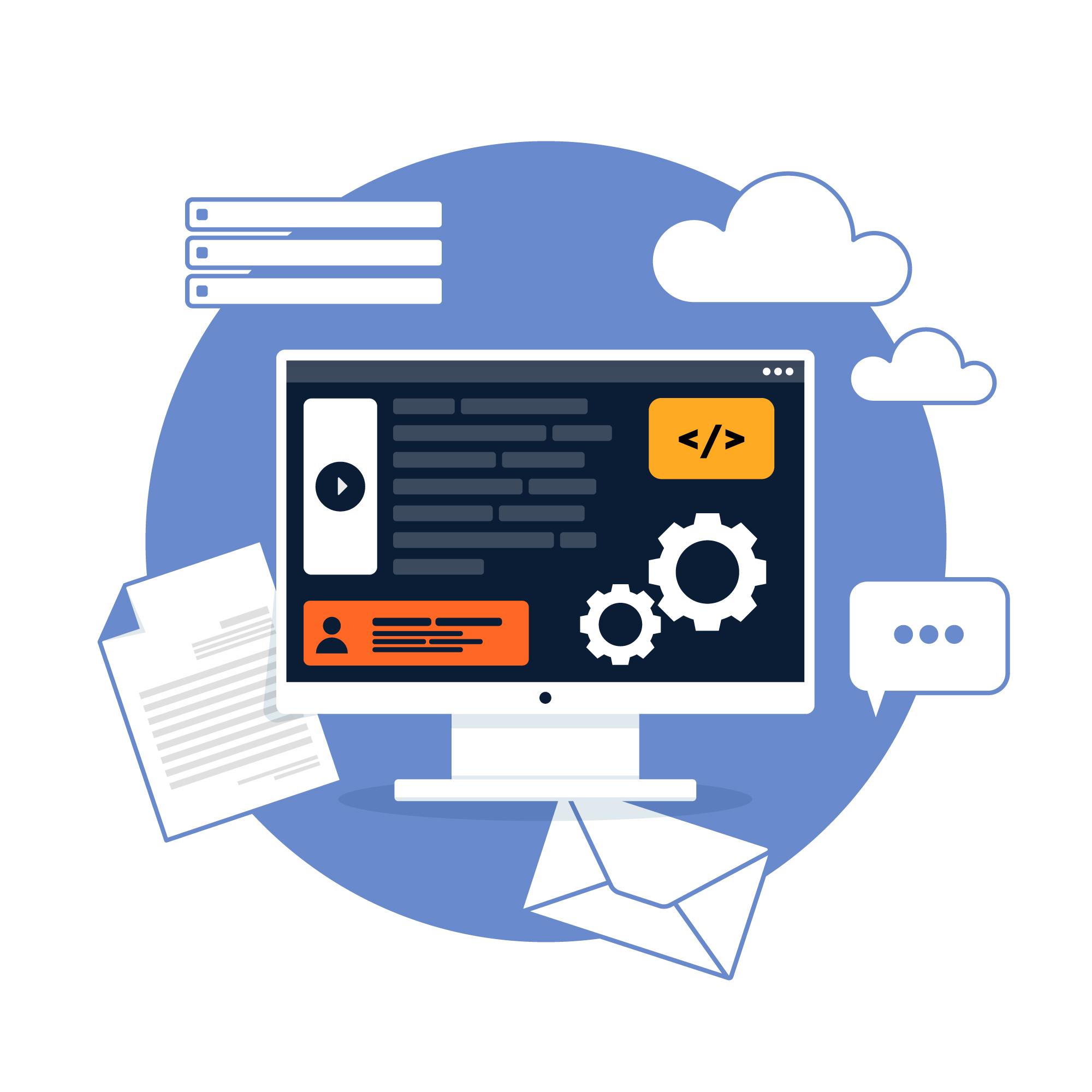
Introduction to Software Development
We believe in a collaborative approach to software development, working closely with our clients to understand their requirements and objectives. Whether you need a custom web application, mobile app, or enterprise software solution, we leverage the latest technologies and best practices to deliver high-quality, scalable, and secure software products.
Our Services:
- Custom Software Development: We design and develop custom software solutions tailored to your specific business needs. From initial concept to final implementation, we ensure that your software aligns with your goals and delivers tangible results.
- Enterprise Software Solutions: We provide comprehensive enterprise software solutions to streamline your business operations and enhance productivity. From CRM systems to ERP solutions, we develop robust software platforms that integrate seamlessly with your existing systems.
- Software Consulting: Our team of experts offers strategic software consulting services to help you make informed decisions about technology adoption, architecture design, and software implementation. Whether you're planning a new project or optimizing an existing system, we provide valuable insights and recommendations to drive your business forward.
Phase
Phases of Software Development
Planning and Research
- Idea Generation: Brainstorming and refining the software idea.
- Market Analysis: Researching competitors, target audience, and market trends.
- Defining Goals: Setting clear objectives and functionalities of the software.
Design
- UI/UX Design: Creating an intuitive and visually appealing user interface.
- Wireframing and Prototyping: Developing initial mockups and prototypes for testing user interaction.
Development
- Frontend Development: Writing code for the user-facing part of the app.
- Backend Development: Building server-side logic, databases, and APIs.
- Testing: Conducting rigorous testing to identify and fix bugs and issues.
Deployment and Maintenance
- Launch: It is deployed to the production environment. This involves preparing the software for release, configuring servers, and ensuring all dependencies are met for smooth operation.
- Updates and Maintenance: Regularly updating the software to improve performance, fix bugs, and introduce new features based on user feedback.
Technology
Technologies and Tools
Programming Languages:
- Java: Widely used for enterprise applications, Android development, and web development.
- Python: Known for its simplicity and versatility, used in web development, data science, artificial intelligence, and more.
- JavaScript: Essential for web development, used for creating dynamic and interactive web applications.
- C#: Primarily used for developing Windows applications, web applications, and games using the Unity game engine.
- C++: Known for its performance and used in system software, game development, and high-performance applications.
Frameworks and Libraries:
- Spring Boot: A Java-based framework for building enterprise-level applications.
- Django: A Python-based web framework for rapid development and clean, pragmatic design.
- Express.js: A minimalist web framework for Node.js, commonly used for building web servers and APIs.
Integrated Development Environments (IDEs):
- Visual Studio Code: A popular and lightweight code editor with support for various programming languages and extensions.
- IntelliJ IDEA: A powerful IDE for Java development, also supports other languages like Kotlin, Python, and JavaScript.
- PyCharm: An IDE specifically designed for Python development, offering features like code completion, debugging, and version control integration.
- Eclipse: An open-source IDE used primarily for Java development but supports various other languages through plugins.
Version Control Systems:
- Git: A distributed version control system widely used for tracking changes in source code during software development.
- GitHub: A web-based hosting service for Git repositories, commonly used for collaborative software development and open-source projects.
- Bitbucket: Another web-based platform for hosting Git repositories, offering features like code collaboration, issue tracking, and continuous integration.
Database Management Systems (DBMS):
- MySQL: An open-source relational database management system (RDBMS) commonly used in web development.
- PostgreSQL: Another open-source RDBMS known for its advanced features and extensibility.
- MongoDB: A NoSQL database that stores data in flexible, JSON-like documents, suitable for scalable and high-performance applications.
Testing and Continuous Integration Tools:
- JUnit: A popular unit testing framework for Java.
- Selenium: A web browser automation tool used for testing web applications across different browsers and platforms.
- Jenkins: An open-source automation server used for building, testing, and deploying software projects continuously.
- Travis CI: A hosted continuous integration service used to build and test software projects hosted on GitHub and Bitbucket.
Challenges
Challenges in App Development

- Expertise: Our team consists of highly skilled software developers with years of experience in their respective fields.
- Quality: We are committed to delivering top-notch software solutions that meet the highest standards of quality and performance.
- Customer Satisfaction: We prioritize customer satisfaction and strive to exceed expectations with every project we undertake.
- Support: Our dedication to customer support ensures that we are there for you every step of the way, from initial consultation to post-launch maintenance and support.
Best Practices
Best Practices in Software Development

- User-Centric Approach: Prioritize user experience and usability during design and development.
- Agile Methodology: Adopting an iterative approach for faster development, flexibility, and continuous improvement.
- Regular Testing: Conducting thorough testing at each development stage to identify and fix issues early.
- Analytics and Feedback: Utilizing analytics tools to gather user data and feedback for informed decision-making.
